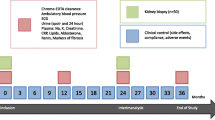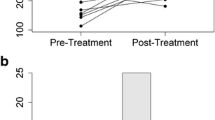Abstract
As a possible explanation for everolimus/cyclosporine-induced hypercholesterolemia seen in transplant recipients, we investigated the interactions of the immunosuppressants everolimus and cyclosporine on bile flow and biliary excretion of bile salts and cholesterol in a subchronic bile fistula model in rats because biliary excretion is a main elimination route of cholesterol. After 2 weeks of daily treatment, everolimus (1 mg/kg i.p.) and cyclosporine (5 mg/kg i.p) decreased bile flow (−45 and −36%) and biliary excretion of bile salts (−34 and −54%) and cholesterol (−25 and −39%) and increased serum concentrations of cholesterol (+40 and +17%) and triglycerides (+220 and +110%). Bile salt serum concentration was elevated only by cyclosporine (+100%), and not by everolimus. Everolimus/cyclosporine slightly enforced the cyclosporine-induced hyperlipidemia but not reduction of bile parameters, while the cyclosporine-induced increase in bile salts in serum was totally prevented. From these results we conclude that bile salt synthesis could be impaired by everolimus, which could be one reason for everolimus-induced hypercholesterolemia.
Similar content being viewed by others
REFERENCES
Seghal SN: Rapamune (sirolimus, rapamycin): an overview and mechanism of action. Ther Drug Monitor 17:660–665, 1995
Liu J, Farmer JD, Lane C, Friedman J, Weissman I, Schreiber S: Calcineurin is a common target of cyclophilin-cyclosporine A and FKBP-FK 506 complexes. Cell 66:807–815, 1991
Schuler W, Sedrani R, Cottens S, Haberlin B, Schulz M, Schuurman HJ, Zenke G, Zerwes HG, Schreier MH: SDZ RAD, a new rapamycin derivative: pharmacological properties in vitro and in vivo. Transplantation 64:36–42, 1997
Schuurman HJ, Cottens S, Fuchs S, Joergensen J, MeerlooT, Sedrani R, Tanner M, Zenke G, Schuler W: SDZ RAD, a new rapamycin derivative: synergism with cyclosporine. Transplantation 64:32–35, 1997
Mayer AD, Dmitrewski J, Squiffflet JP, Besse T, Grabensee B, Klein B, Eigler FW, Heemann U, Pichlmayr R, Behrend M, Vanrenterghem Y, Donck J, Van Hooff J, Christiaans M, Morales JM, Andres A, Johnson RW, Short C, Buchholz B, Rehmert N, Land W, Schleibner S, Forsythe JL, Talbolt D, Neumayr HH, Hauser RI, Ericzon BG, Brattström C, Claesson K, Mühlbacher F, Pohanka E: Multicenter randomized trial comparing tacrolimus (FK506) and cyclosporine in the prevention of renal allograft rejection. Transplantation 64:436–443, 1997
Bennett WM, Demattos A, Meyer MM, Andoh T, Barry JM: Chronic cyclosporine nephropathy: the Achilles' heel of immunosuppressive therapy. Kidney Int 50:1089–1100, 1996
Andoh TF, Burdman EA, Bennett WM: Nephrotoxicity of immunosuppressive drugs: experimental and clinical observations. Semin Nephrol 17:34–45, 1997
Schuurman HJ, Schuler W, Ringers J, Jonker M: The macrolide SDZ RAD is efficacious in a nonhuman primate model of allotransplantation. Transplant Proc 30:2198–2199, 1998
Schuurman HJ, Ringers J, Schuler W, Slingerland W, Jonker M: Oral efficacy of the macrolide immunosuppressant SDZ RAD and of cyclosporine microemulsion in cynomolgus monkey kidney allotransplantation. Transplantation 69:737–742, 2000
Hausen B, Boeke K, Berry GJ, Segarra I, Benet LZ, Christians U, Morris RE: Coadministration of neoral and the novel rapamycin analog, SDZ RAD, to rat lung allograft recipients: potentiation of immunosuppressive efficacy and improvement of tolerability of staggered versus simultaneous treatment. Transplantation 67:956–962, 1999
Hausen B, Boeke K, Berry GJ, Segarra IT, Christians U, Morris RE: Suppression of acute rejection in allogeneic rat lung transplantation: a study of the efficacy and pharmacokinetics of rapamycin derivative (SDZ RAD) used alone and in combination with a microemulsion formulation of cyclosporine. J Heart Lung Transplant 18:150–159, 1999
Hausen B, Gummert J, Berry GJ, Christians U, Serkova N, Ikonen T, Hook L, Legay F, Schuler W, Schreier MH, Morris RE: Prevention of acute allograft rejection in nonhuman primate lung transplant recipients: induction with chimeric anti-interleukin-2 receptor monoclonal antibody improves the tolerability and potentiates the immunosuppressive activity of a regimen using lowdoses of both microemulsion cyclosporine and 40-O-(2-hydroxyethyl)-rapamycin. Transplantation 69:488–496, 2000
Hausen B, Ikonen T, Briffa N, Berry GJ, Christians U, Robbins RC, Hook L, Serkova N, Benet LZ, SchulerW, Morris RE: Combined immunosuppression with cyclosporine (neoral) and SDZ RAD in nonhuman primate lung transplantation: systematic pharmacokineticbased trials to improve efficacy and tolerability. Transplantation 69:76–86, 2000
Viklicky O, Zou H, Muller V, Lacha J, Szabo A, Heemann U: SDZ-RAD prevents manifestation of chronic rejection in rat renal allografts. Transplantation 69:497–502, 2000
Serkova N, Hausen B, Berry GJ, Jacobsen W, Benet LZ, Morris RE, Christians U: Tissue distribution and clinical monitoring of the novel macrolide immunosuppressant SDZ-RAD and its metabolites in monkey lung transplant recipients: interaction with cyclosporine. J Pharmacol Exp Ther 294:323–332, 2000
Bohler T, Waiser J, Budde K, Lichter S, Jauho A, Fritsche L, Korn A, Neumayer HH: The in vivo effect of rapamycin derivative SDZ RAD on lymphocyte proliferation. Transplant Proc 30:2195–2197, 1998
Kovarik JM, Kahan BD, Kaplan B, Lorber M, Winkler M, Rouilly M, Gerbeau C, Cambon N, Boger R, Rordorf C: Longitudinal assessment of everolimus in de novo renal transplant recipients over the first post-transplant year: pharmacokinetics, exposure-response relationships, and influence on cyclosporine. Clin Pharmacol Ther 69:48–56, 2001
Kovarik JM, Kaplan B, Tedesco Silva H, Kahan BD, Dantal J, Vitko S, Boger R, Rordorf C: Exposure-response relationships for everolimus in de novo kidney transplantation: defining a therapeutic range. Transplantation 73:920–925, 2002
Dueland S, Reichen J, Everson GT, Davis RA: Regulation of cholesterol and bile acid homeostasis in bile-obstructed rats. Biochem J 280:373–377, 1991
Chisholm JW, Nation P, Dolphin PJ, Agellon LB: High plasma cholesterol in drug-induced cholestasis is associated with enhanced hepatic cholesterol synthesis. Am J Physiol 276:G1165–G1173, 1999
Deters M, Nolte K, Kirchner G, Resch K, Kaever V: Comparative study analyzing effects of sirolimus-cyclosporin and sirolimus-tacrolimus combinations on bile flowin the rat. Dig Dis Sci 46:2120–2126, 2001
Deters M, Klabunde T, Kirchner G, Resch K, Kaever V: Sirolimus/cyclosporine/tacrolimus interactions on bile flow and biliary excretion of immunosuppressants in a subchronic bile fistula rat model. Br J Pharmacol 136:604–612, 2002
Queneau PE, Bertault-Peres P, Guitaoui M, Mesdjian E, Durand A, Montet JC: Improvement of cyclosporin A-induced cholestasis by tauroursodeoxycholate in a long-term study in the rat. Dig Dis Sci 39:1581–1585, 1994
McGowan MW, Artiss JD, Strandbergh DR, Zak B: A peroxidase-coupled method for the colorimetric determination of serum triglycerides. Clin Chem 29:538–542, 1983
Siedel J, Hagele EO, Ziegenhorn J, Wahlefeld AW: Reagent for the enzymatic determination of serum total cholesterol with improved lipolytic efficiency. Clin Chem 29:1075–1080, 1983
Mashige F, Tanaka N, Maki A, Kamei S, Yamanaka M: Direct spectrophotometry of total bile acids in serum. Clin Chem 27:13452–13456, 1981
Consensus Document: Hawk's Cay meeting on the therapeutic drug monitoring of cyclosporine. Transplant Proc 22:1357–1361, 1999
Christians U, Zimmer KO, Wonigeit K, Maurer G, Sewing KF: Liquid chromatographic measurement of cyclosporine A and its metabolites in blood, bile and urine. Clin Chem 34:34–39, 1988
Deters M, Kirchner G, Resch K, Kaever V: Simultaneous quantification of sirolimus, everolimus, tacrolimus and cyclosporine by liquid chromatography-mass spectrometry (LC-MS). Clin Chem Lab Med 40:285–292, 2002
Stacey NH, Kotecka B: Inhibition of taurocholate and ouabain transport in isolated rat hepatocytes by cyclosporin A. Gastroenterology 95:780–786, 1988
Mosley RH, Johnson TR, Morrissette JM: Inhibition of bile salt transport by cyclosporine A in rat liver plasma membrane vesicles. J Pharmacol Exp Ther 253:974–980, 1990
Böhme M, Müller M, Leier I, Jedlitschky G, Keppler D: Cholestasis caused by inhibition of the adenosine triphosphate-dependent bile salt transport in rat liver. Gastroenterology 107:255–265, 1994
Stieger B, Fattinger K, Madon J, Kullak-Ublick GA, Meier PJ: Drug-and estrogen-induced cholestasis through inhibition of the hepatocellular bile salt export pump (Bsep) of rat liver. Gastroenterology 118:422–430, 2001
Moran D, De Buitrago JM, Fernandez E, Galan AI, Munoz ME, Jimenez R: Inhibition of biliary glutathione excretion by cyclosporine A in the rat: possible mechanisms and role in the cholestasis induced by the drug. J Hepatol 29:68–77, 1998
Bramow S, Ott P, Nielsen FT, Bangert K, Tygstrup N, Dalhoff K: Cholestasis and regulation of genes related to drug metabolism and biliary transport in rat liver following treatment with cyclosporine A and sirolimus (Rapamycin). Pharmacol Toxicol 89:133–139, 2001
Al Rayes O, Wallmark A, Floren CH: Reversal of cyclosporineinhibited low-density lipoprotein receptor activity in HepG2 cells by 3-hydroxy-3-methylglutaryl coenzyme A reductase inhibitors. Hepatology 25:991–994, 1997
Hoogeveen RC, Ballantyne CM, Pownall HJ, Opekun AR, Hachey L, Jaffe JS, Oppermann S, Kahan BD, Morrissett JD: Effect of sirolimus on the metabolism of ApoB100-containing lipoproteins in renal transplant patients. Transplantation 72:1244–1250, 2001
Graham J, Ahmed H, Northfield TC: Unidirectional pathway of vesicular cholesterol transport. In Trends in Bile Salt Research. G Paumgartner, (ed). Dordrecht, NewYork, Kluwer, 1989, pp 177–187
Napoli KL, Wang ME, Urbauer D, Kahan BD: Comparison of effects of sirolimus (RAPA) and everolimus (RAD) on cyclosporine (CSA) whole blood and tissue concentration in rats. Ther Drug Monit 23:469, 2001
Lampen A, Zhang Y, Hackbarth I, Benet LZ Sewing KF, Christians U: Metabolism and transport of the macrolide immunosuppressant sirolimus in the small intestine. J Pharmacol Exp Ther 285:1104–1112, 1998
Author information
Authors and Affiliations
Rights and permissions
About this article
Cite this article
Deters, M., Kirchner, G., Koal, T. et al. Everolimus/Cyclosporine Interactions on Bile Flow and Biliary Excretion of Bile Salts and Cholesterol in Rats. Dig Dis Sci 49, 30–37 (2004). https://doi.org/10.1023/B:DDAS.0000011598.15105.58
Issue Date:
DOI: https://doi.org/10.1023/B:DDAS.0000011598.15105.58




